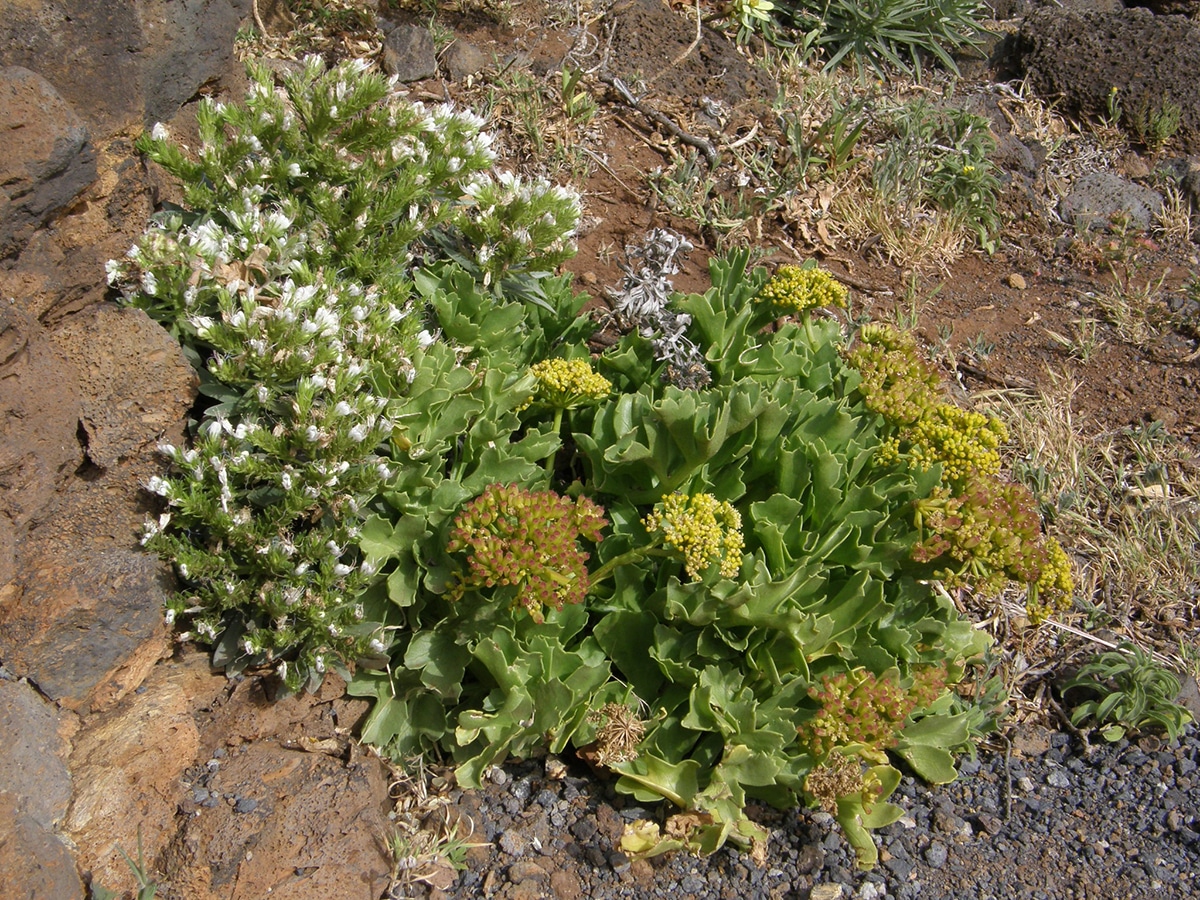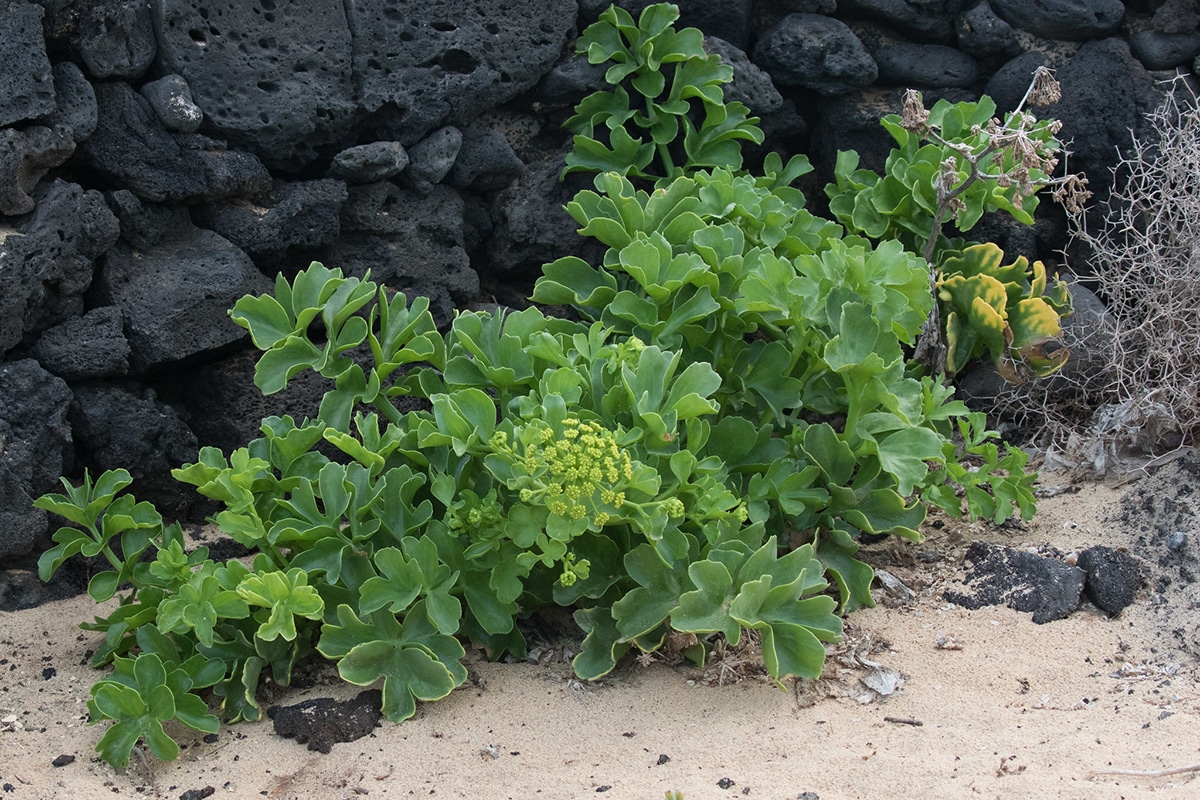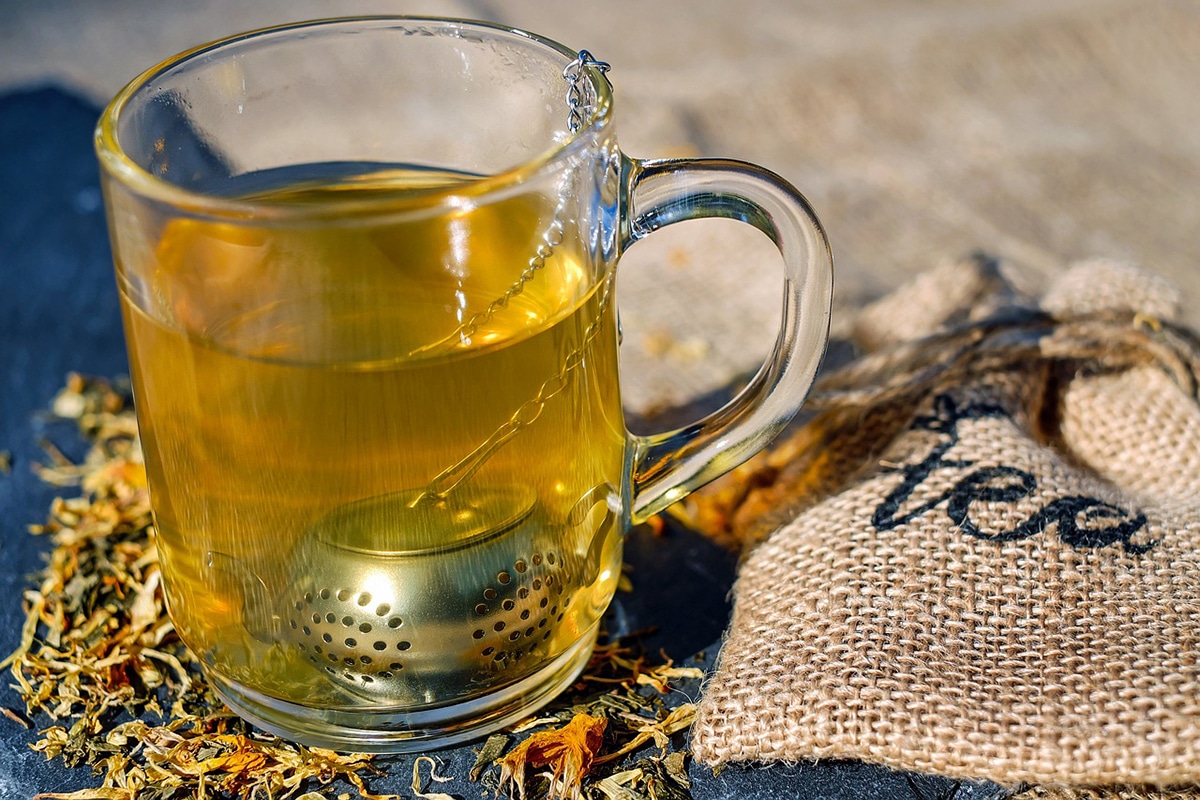
Have you ever heard of sea lettuce? Or the sea chard? Both are the same plant, known scientifically as Astydamia latifolia. As is to be expected from their names, it is an edible vegetable that grows near the sea, on the rocky coasts of North Africa and the Canary Islands.
If you want to know more about this curious plant, where to find it, what are its uses and benefits and what is the meaning of its name, you have found the right article. Here we will answer all these questions and more, so keep reading.
What is Astydamia latifolia?

La Astydamia latifolia it is commonly known as "sea lettuce", "sea chard", "napkin holder" or "napkin". It is a species of vegetable that belongs to the family apiaceae. In it it is the only species that is part of the genus Astydamia. This plant is native to North Africa, So it is not surprising that we can also find it in each of the Canary Islands, specifically on the rocky coasts.
But what are its other names like "napkin" or "napkin holder"? Well, it turns out that the leaves of Astydamia latifolia were used as a natural substitute for hygiene related to the mouth, hands, etc. It is therefore a type of natural "napkin".
This plant was first described by the French botanist Henri Ernest Baillon and published in his book on botany entitled "Histoire des Plantes". Regarding the meaning of his name, the term latifolia, from Latin, means "with wide leaves." Regarding the word Astydamia, It is the genus that was created in honor of the nymph Astydamia, who was the daughter of Oceanus. This curious reference is due to the fact that this vegetable normally grows near the sea.
One place where we can find sea lettuce in abundance is the island of Fuerteventura. There it is very common to see this plant in sandy areas and coastal rocks. An example of places to find it would be the surroundings of the well-known Tostón lighthouse, the beaches of Puerto Lajas, the northeastern coast that is located between Cotillo and Corralejo and also along the western coast of Jandía, although in a scattered way. So that, la Astydamia latifolia it forms one of the main components of the gallophilic vegetation of the coasts.
Description:
As we mentioned earlier, la Astydamia latifolia It is a plant species native to the Canary Islands. In addition, it is a perennial or biennial plant whose stems are fleshy. Also the leaves of this vegetable are fleshy and light green to glaucous green. It should be noted that they are pinnate or even incised-toothed and that they have very wide lobes. The root of this plant is irregular and has a tuber. Its color is dark tan on the outside and white on the inside.
Regarding the flowers, these tend to have yellowish tones and are generally arranged in umbels or clusters six to twelve centimeters in diameter and with a radius of up to fifteen centimeters. The flowering season for sea chard begins in December and lasts until April. As for the fruits, they have an ovoid shape and can be more or less fleshy. When they are ripe, their texture is corky and they have a light brown color. They have a total of three ribs and an edge that is slightly dilated.
In conclusion we can say that the simplest way to recognize the Astydamia latifolia It is through its small, yellowish flowers grouped in umbelliform inflorescences with about fifteen arms. Its large, succulent leaves that are deeply serrated also stand out. In its whole, reminds a bit of the appearance of a lettuce with flowers and if we are also near the sea in a sandy or rocky environment, it is most likely that it is this plant.
Uses of Astydamia latifolia

That Astydamia latifolia Also known as "sea lettuce" or "sea chard" has its reasons. During times of famine that occurred during the seventeenth and eighteenth centuries, people consumed this plant. Both the young stems and the leaves can be used for salads. Another use that can be given at the nutritional level is through infusions. They have good carminative, diuretic, emmenagogue and stomach properties.
Apart from its culinary use, sea chard also has medicinal properties to consider. Among them are the following:
- Antiscorbutics
- Stomach stimulators
- Regulators of menstruation
So you already know: If one day you go to visit the coasts of North Africa or the Canary Islands, you will surely see this plant in abundance. You can even get to try it and enjoy its benefits.